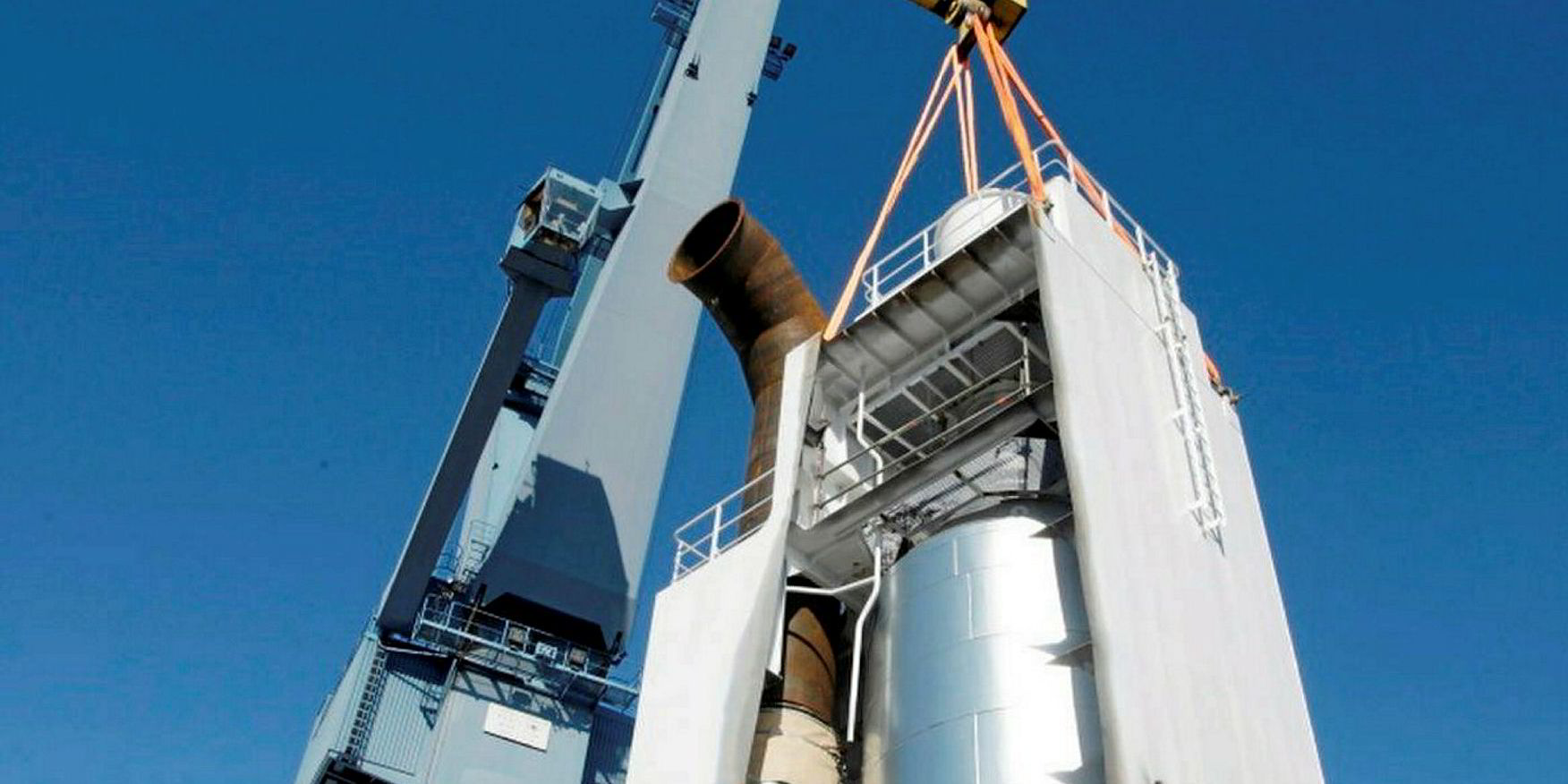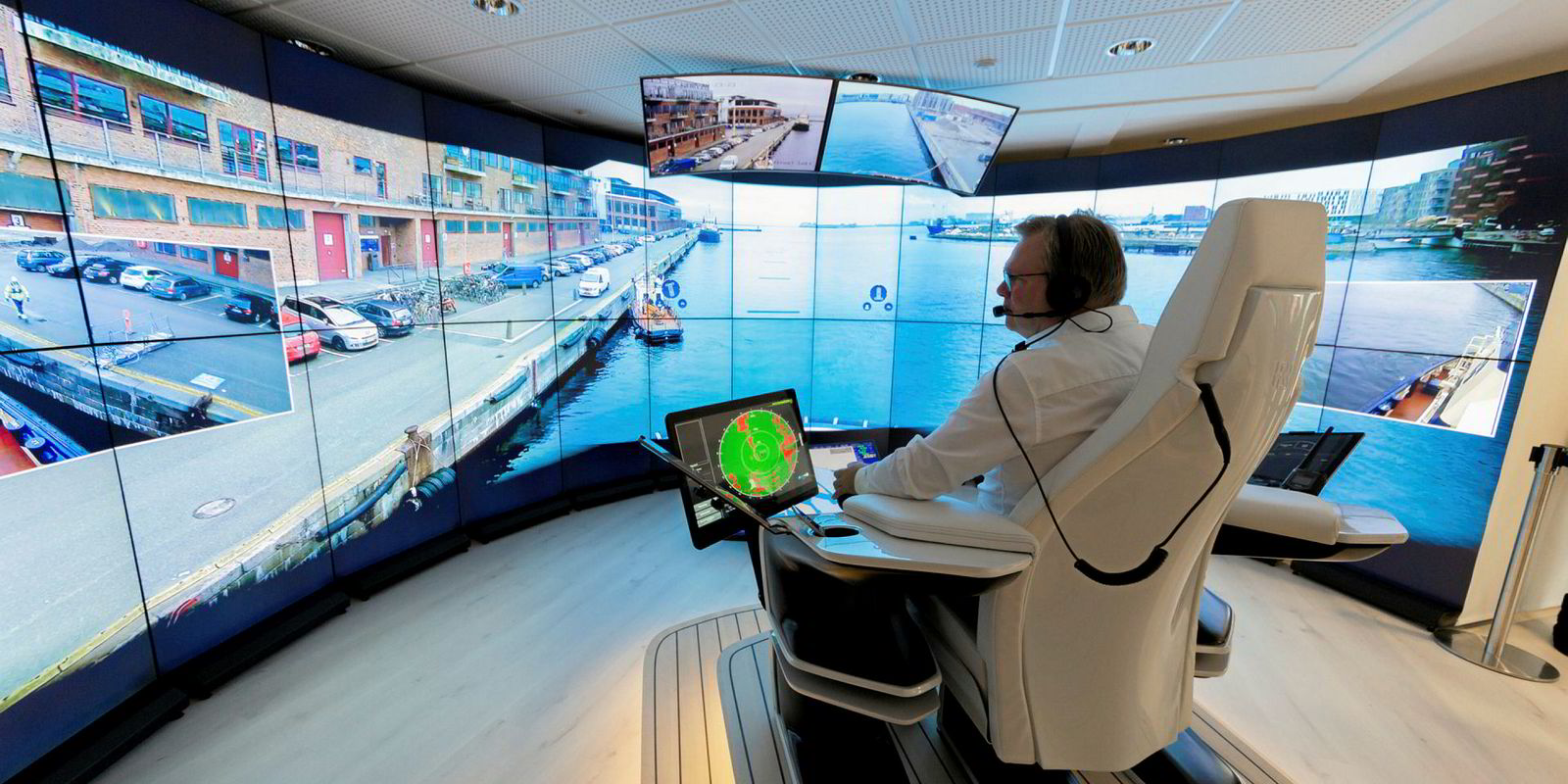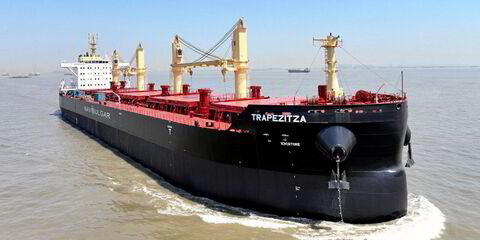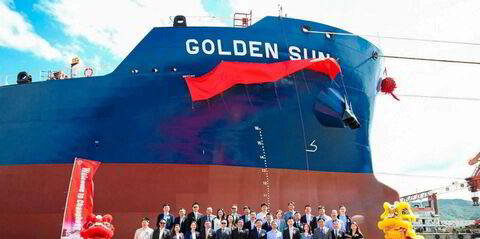Various technologies need to be combined in a holistic approach to powering vessels and tackling fuel-emissions issues, says Riku-Pekka Hagg, vice president of ship design at Wartsila Marine Solutions.
Also, the cost of manufacturing is being considered more when designing vessels after the rush towards so-called eco-ships.
Wartsila, the Finnish power and marine technology provider, has ploughed much of its investment into LNG as a fuel, while at the same time being one of the leading suppliers of scrubbers.
Hagg says he does not necessarily disagree with the view that LNG will be the primary source of fuel going forward, especially with the IMO’s 2020 sulphur cap looming.
But Wartsila is known to be designing hybrid LNG-fuelled vessels with batteries, although Hagg says he cannot discuss details at this stage.
The company is also working with offshore support vessel firms on hybrid LNG units still to be contracted, and the use of batteries while OSVs are on standby is seen as potentially making a lot of sense. A hybrid shortsea vessel is also under discussion.
Wide market appeal
Hagg says offshore vessel owners were the leaders in using hybrid technologies, initially seeking conversion of existing ships. But now even the oil companies are including the use of batteries in their tender requirements.
Ola Elvestuen, Norway’s minister of climate and the environment, told TradeWinds in an interview recently that 60 electric or hybrid-electric Norwegian car ferries are already in operation, on order or in planning.
Hagg says people have asked why Wartsila itself has not invested in batteries. The technology is evolving very fast and the company felt it better to remain in the “cradle of the energy sources”.
He says batteries are where the energy is stored, and generating that energy creates new possibilities.”
Hagg says combining many technologies in itself “creates a degree of innovation”.
Hybrid LNG-fuelled ships that also use wind-assisted technology is a further option going forward.
Wartsila is not alone in the view that LNG has a role alongside other technologies.
Jamie Smith, a senior vice president at classification society ABS, tells TradeWinds: “LNG as a fuel has proven its business case from a technology point of view, but there are questions as to its long-term suitability for meeting carbon emission reduction targets.
“It is possible that owners will consider LNG for at least another cycle of newbuildings but that, over time, alternatives may begin to be favoured for compliance reasons.”
In some respects, ship design has taken a step backwards.
Radical look
For example, eco-ships can be designed with very aerodynamically looking wheelhouses, similar to the look on UFOs, “but the other side of the coin is the cost”.
“The more ‘rounded’ a ship is, the more it costs and [the] more difficult [it is] for the shipbuilder,” Hagg says.
Aerodynamics is still a consideration but ease of manufacture is again in focus.
“Radical is how you can optimise and integrate everything, including the new technologies” Hagg says. “Not so much what things look like, which I think is secondary.”
He says Wartsila has adopted a holistic approach to its investment in LNG fuelling, not only engines but looking at the whole gas supply chain, starting from the terminals and embracing such aspects as how to use the boil-off.
“There have been a lot of technology developments on that side,” Hagg says.
He adds that it is difficult to say whether LNG should be seen as an “intermediate” solution to lowering shipping’s carbon footprint.
It has provided a “pathway” but, “when I am looking for the real clean technologies, I think fuel cells will be one of them”.

Natural gas is one of the four main sources for the commercial production of hydrogen.
“So [it is] difficult to say [if] LNG is an intermediate step. It could be a bit more permanent,” Hagg says, pointing to the 2050 target set by the IMO for halving greenhouse gas emissions from shipping.
He says Norway, whose parliament has voted to halt emissions from cruiseships and ferries in the country’s world heritage fjords once it is technically possible, is “driving technology forward”.
John Hicks, Lloyd Register’s global passengership manager, told TradeWinds previously that electric propulsion is “here to stay in cruiseship design for the foreseeable future, although the method of producing that electricity is evolving”.
He said: “We have seen engines go from diesel to dual fuel to LNG and methanol, with the next step potentially being a hybrid system or fuel cells. The viability of hydrogen is being investigated in general by the industry, with an eye on developing a zero-carbon vessel.”
Royal Caribbean has begun testing fuel-cell technology on an existing Oasis-class cruiseship. In a statement some time ago, it announced it had “run progressively larger fuel-cell projects on new Quantum-class vessels being built in the next several years”.
Torstein Hagen-led Viking Cruises has been looking for partners to develop a new generation of cruiseship that is powered by hydrogen fuel cells. It says the biggest challenge is the liquid hydrogen (LH2) supply chain.
Hagg acknowledges the role of smaller companies in developing hybrid technologies, including those offering Flettner rotor sails — an old technology that has found a new lease of life.






